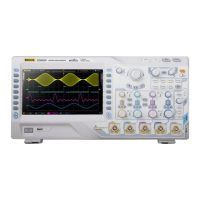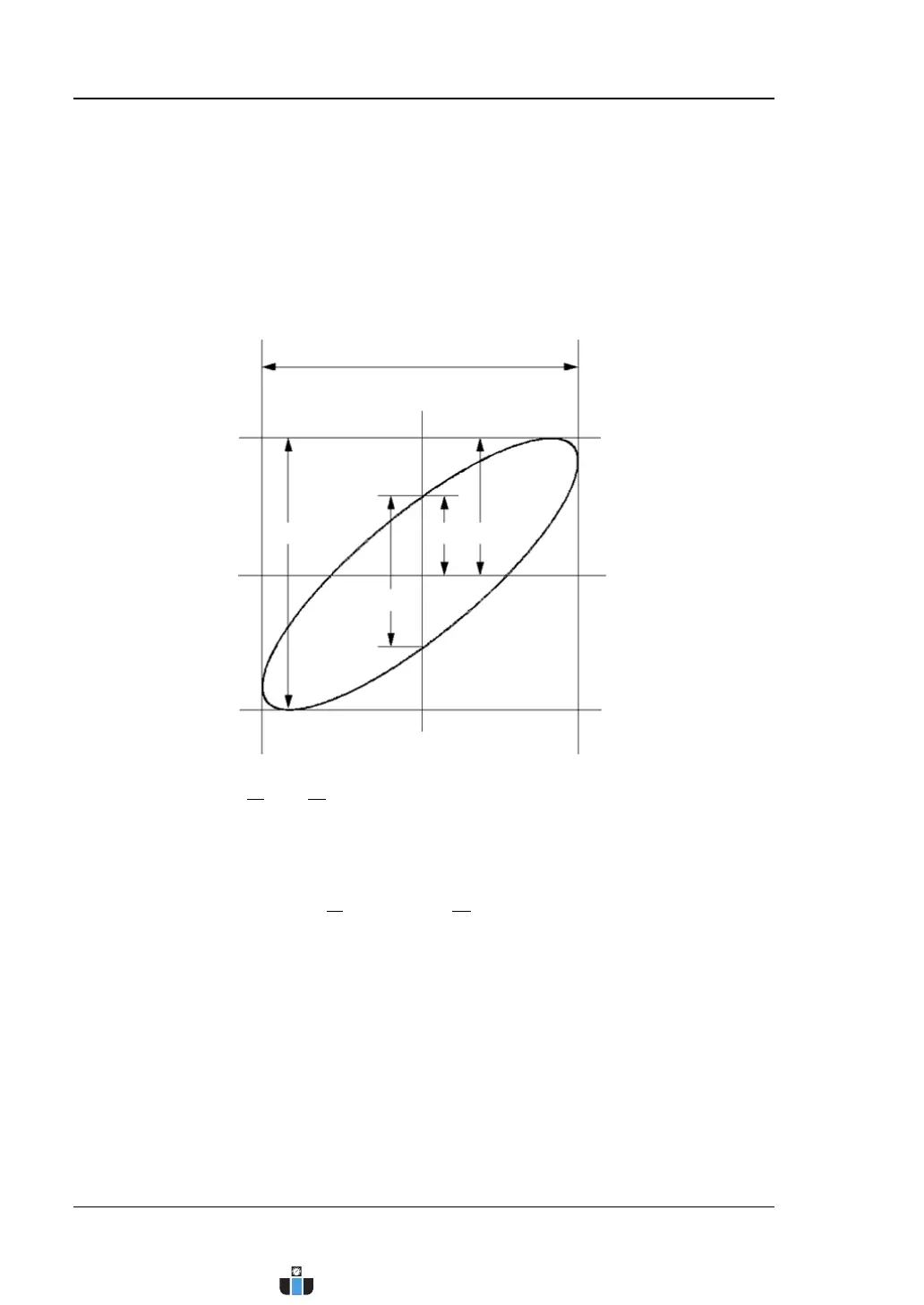RIGOL Chapter 3 Horizontal System Setting
3-6 MSO4000/DS4000 User’s Guide
Phase Deviation Measurement Principle
The phase deviation between two signals with the same frequency can be easily
measured via the Lissajous method. The figure below shows the measurement
principle of the phase deviation (assume that the amplitudes of the two signals are
the same).
According to
or
(wherein, θ is the phase deviation angle between the
channels; the definitions of
,
,
and
are as shown in the figure above),
you can calculate the phase deviation angle.
or
If the principal axis of the ellipse is within quadrant I and III, the phase deviation
angle obtained should be within quadrant I and IV, namely within (0 to π/2) or (3π/2
to 2π). If the principal axis of the ellipse is within quadrant II and IV, the phase
deviation angle obtained should be within quadrant II and III, namely within (π/2 to
π) or (π to 3π/2).
A
B
C
D
The signal must be horizontally centered
II I
III IV
www.calcert.com sales@calcert.com1.800.544.2843
0
5
10
15
20
25
30

